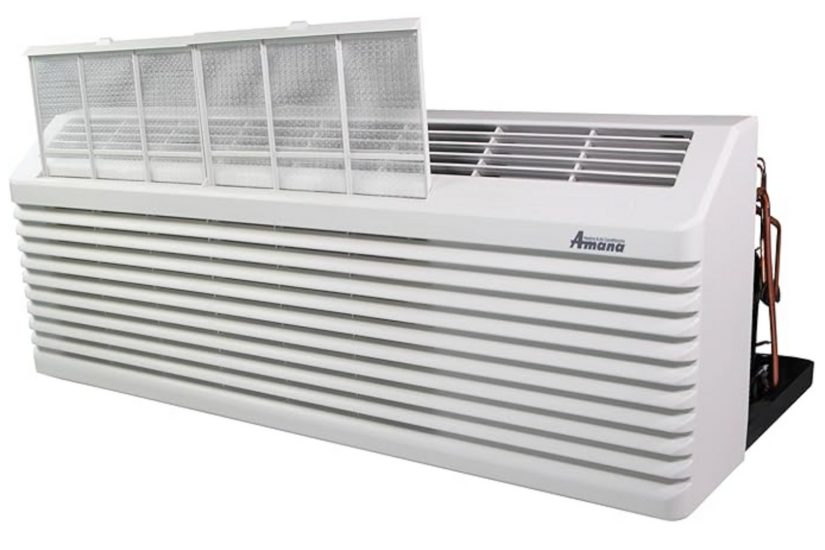
Tired of soggy yards? Turn wet areas into beautiful gardens with plants that love water! Choose ferns, hostas, or irises to grow strong in damp soil.
Add rocks, paths, or a small pond to make your space lively and fun.
Need ideas for year-round color? Try native plants that bloom in spring, summer, and fall.
Use mulch to keep weeds away and water flowing. With the right mix, your wet spots can shine all year!
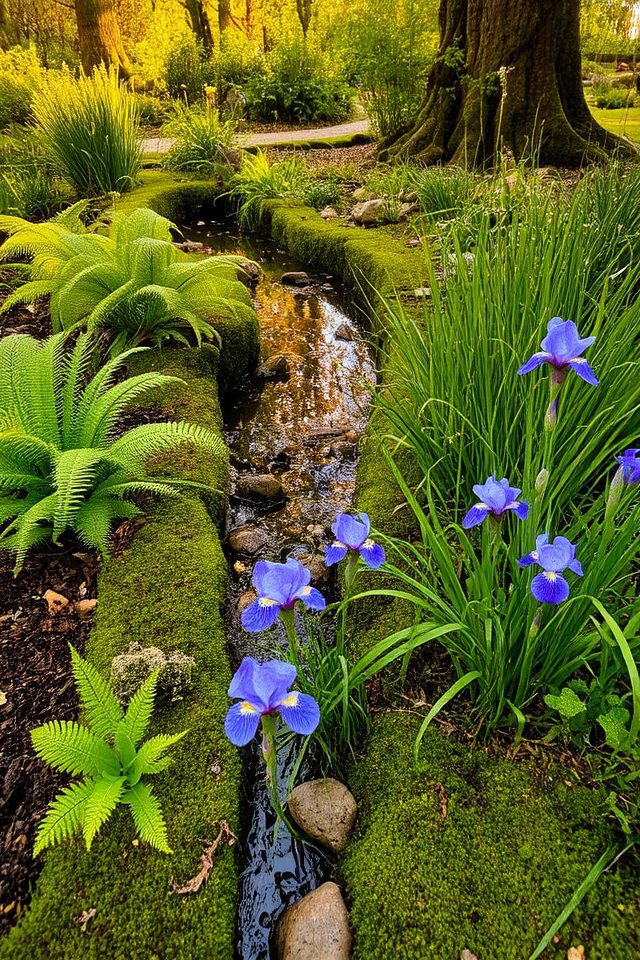
When selecting plants for wet areas, it’s crucial to choose species that thrive in moist conditions and can tolerate periodic flooding. Opt for native wetland plants, such as ferns, sedges, and irises, which are well-adapted to the environment. Additionally, consider incorporating plants with deep roots to help stabilize the soil and improve drainage. By selecting the right flora, you can create a vibrant, sustainable garden that enhances both beauty and biodiversity in wet areas.
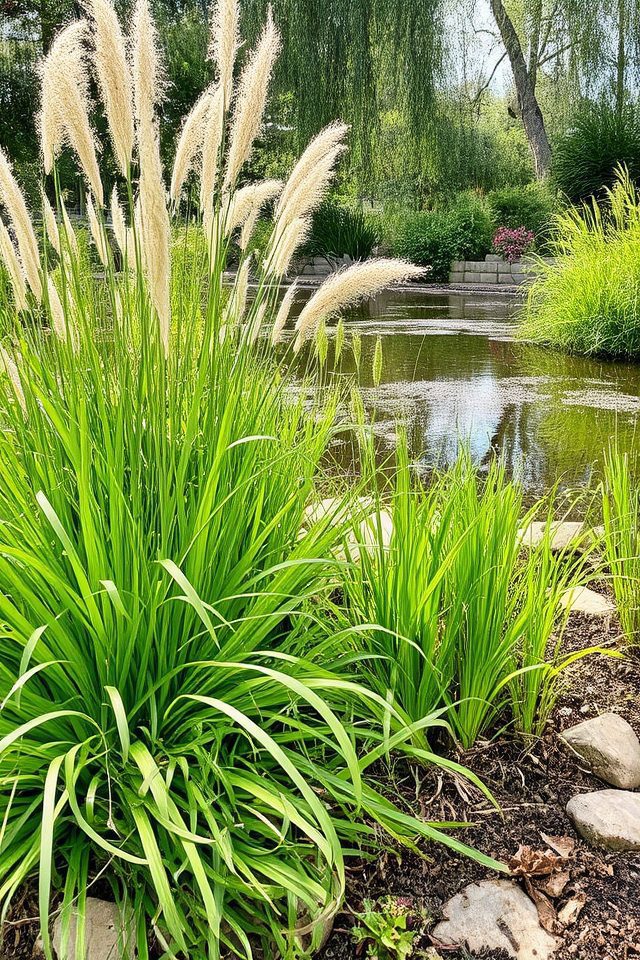
Incorporating ornamental grasses into wet areas of your garden can create stunning visual contrasts and add movement to your landscape. Varieties such as Miscanthus, Carex, and Juncus thrive in moisture-rich environments and offer lush, cascading textures. These grasses not only enhance the aesthetic appeal but also provide habitat for wildlife. Their hardiness and low maintenance make them ideal for wet zones, creating a serene and naturalistic atmosphere in your garden.
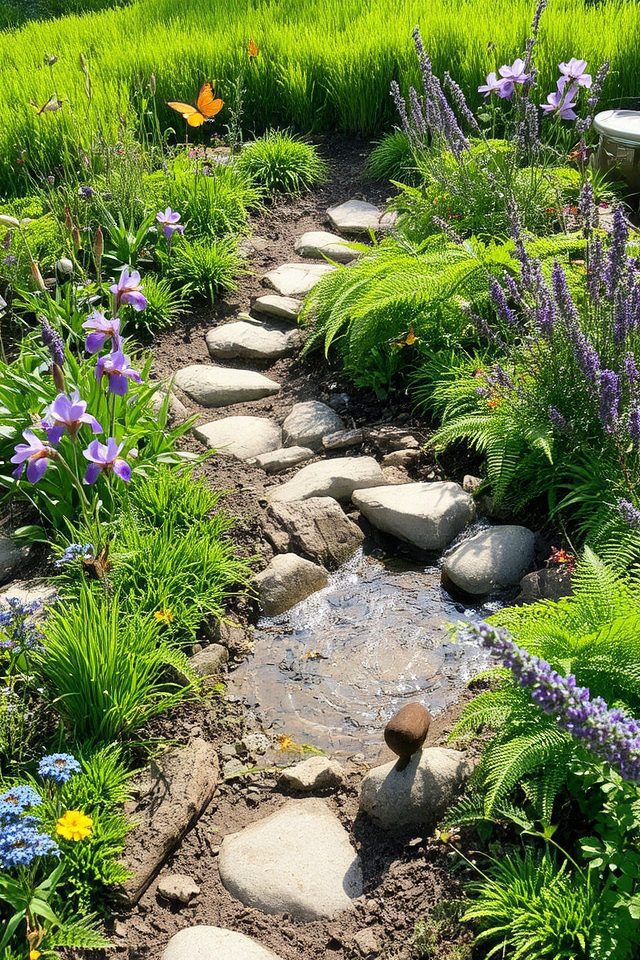
Creating a rain garden is an effective way to manage excess water in wet areas while enhancing your landscape’s beauty. This garden features native plants that thrive in moist conditions, helping absorb rainwater and filter pollutants. To design a rain garden, choose a low-lying area and dig a shallow depression that allows water to collect. Add a diverse selection of moisture-loving plants, ensuring they provide a vibrant showcase while supporting local wildlife and improving drainage.
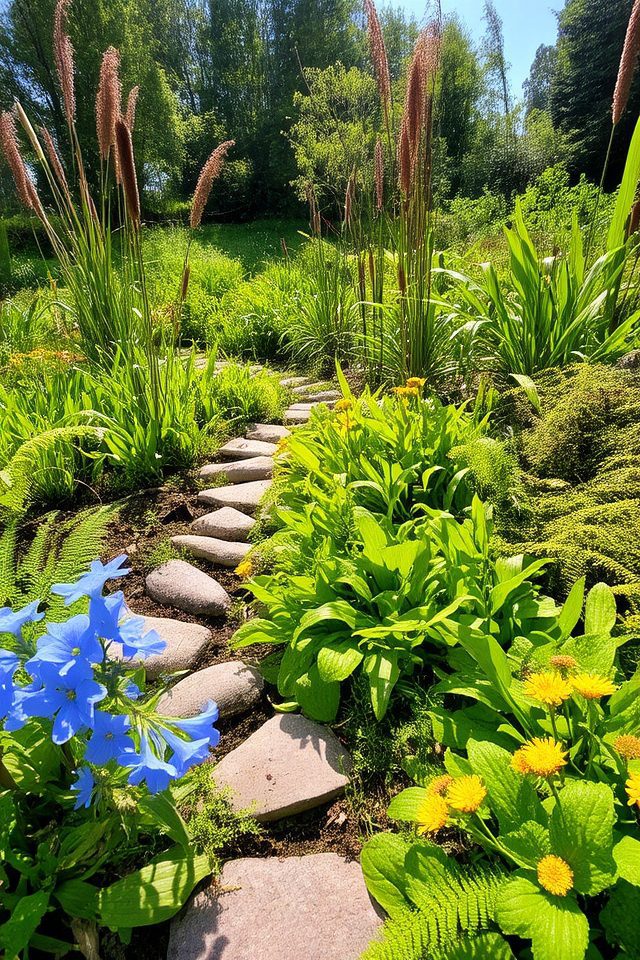
Utilizing native species in wet garden areas is an effective strategy for creating a thriving landscape. Native plants are naturally adapted to local soil and moisture conditions, making them resilient to fluctuating water levels. They require less maintenance and are beneficial for local wildlife, attracting pollinators and providing habitat. Additionally, native species help prevent soil erosion and improve water quality by filtering runoff, making them an excellent choice for sustainable gardening in wet environments.

Designing a stream or pond in wet areas brings a beautiful focal point to your garden while enhancing biodiversity. Consider the natural flow of water and integrate native aquatic plants to promote a healthy ecosystem. Curved edges can create a more organic look, while strategically placed rocks or pebbles add texture. Incorporate seating areas nearby for serene viewing, and use plants like ferns and cattails to blend the water feature seamlessly into the landscape.
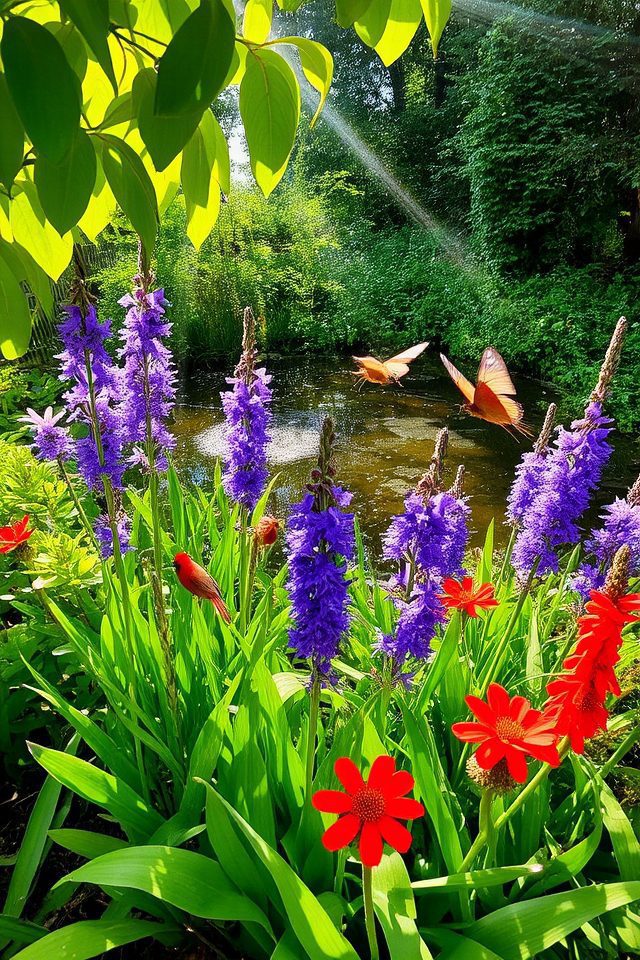
Adding color with wetland perennials is a fantastic way to bring vibrancy to wet areas in your garden. These hardy plants, such as iris, Joe Pye weed, and cardinal flower, thrive in moisture-rich environments while offering stunning blooms and foliage. By strategically planting these perennials, you not only enhance the overall aesthetics of your landscape but also support local wildlife, including pollinators. Their diverse colors and textures create a beautiful, lively display that flourishes even in challenging conditions.
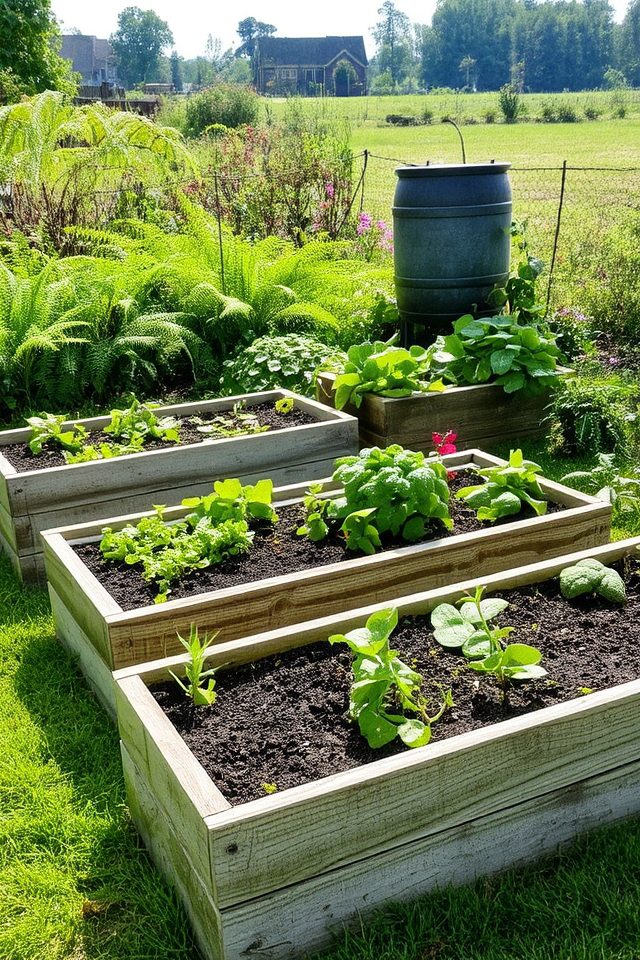
Implementing raised garden beds in wet areas is a practical solution to manage excess moisture while creating a thriving garden space. These elevated beds improve drainage, preventing root rot and allowing plants to flourish in waterlogged conditions. Constructed with durable materials, raised beds can be filled with a well-draining soil mix to support healthy root development. Additionally, they can be customized to fit any garden style, making them an attractive option for those with challenging landscapes.
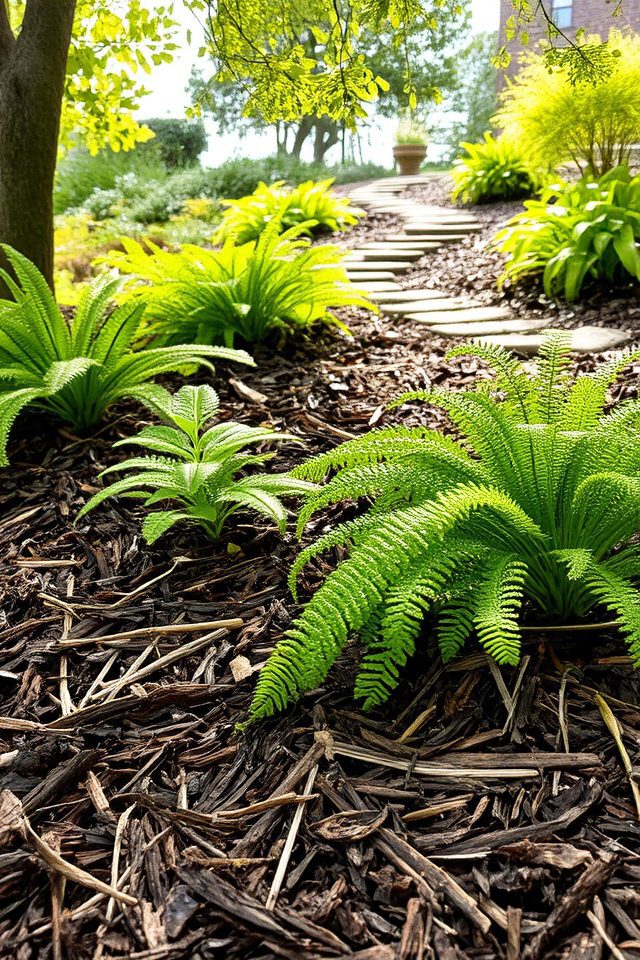
Using mulch in wet areas can greatly enhance moisture retention while preventing soil erosion. Organic mulch materials, such as wood chips or straw, help absorb excess water and release it slowly to plant roots, maintaining a balanced moisture level. Additionally, mulch provides insulation for the soil, regulating temperature fluctuations. When applied around moisture-loving plants, mulch creates a healthier growing environment and reduces weed growth, making it an essential element for successful gardening in damp conditions.
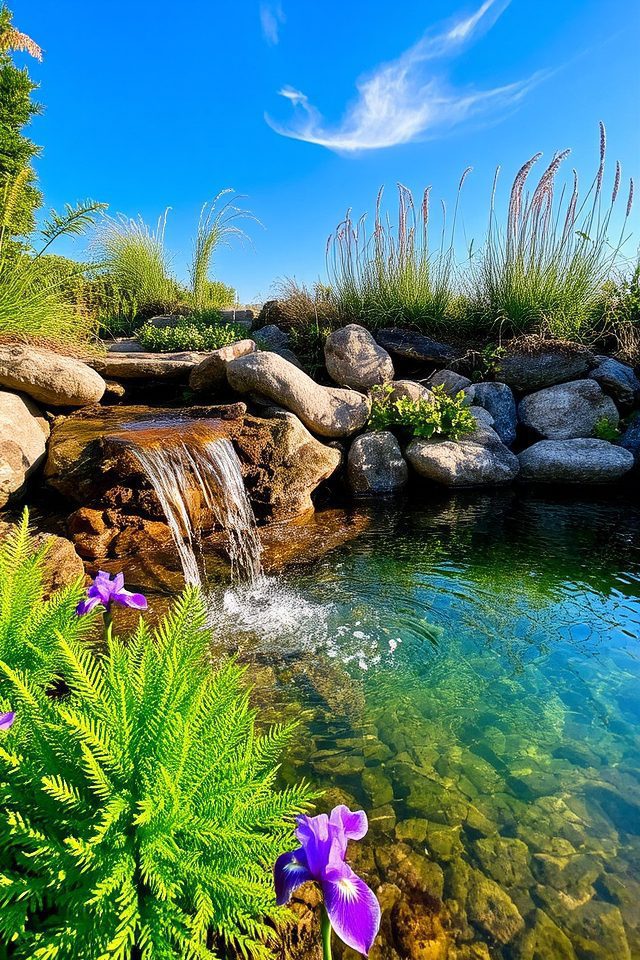
Creating a focal point in wet areas with water features can elevate the aesthetic of your garden. Consider installing a small pond, a cascading waterfall, or a decorative fountain that complements the surrounding landscape. Surround these features with moisture-loving plants like ferns and iris to enhance the natural look. The soothing sound of flowing water adds tranquility, while well-placed lighting can highlight the beauty of the feature at night, making it an inviting centerpiece in your outdoor space.
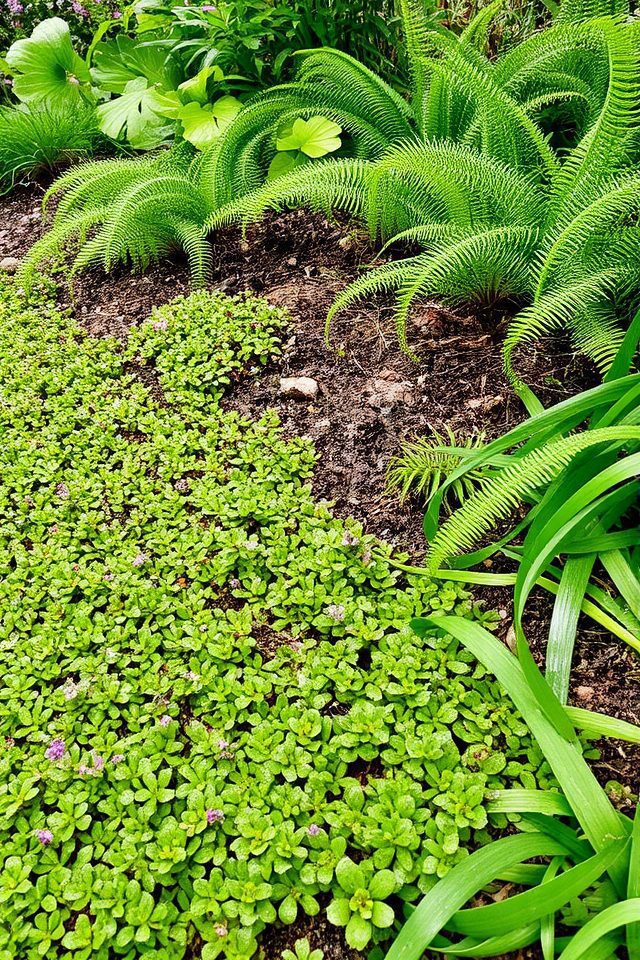
Planting ground covers in wet areas is an effective strategy for preventing soil erosion. These resilient plants create a dense mat that stabilizes the soil, reducing runoff during heavy rains. Species such as creeping thyme, sedges, and native ferns thrive in moist conditions and help absorb excess water. Additionally, they enhance biodiversity by providing habitat for various wildlife. By incorporating these ground covers, you can maintain the integrity of your landscape while adding beauty to wet areas.
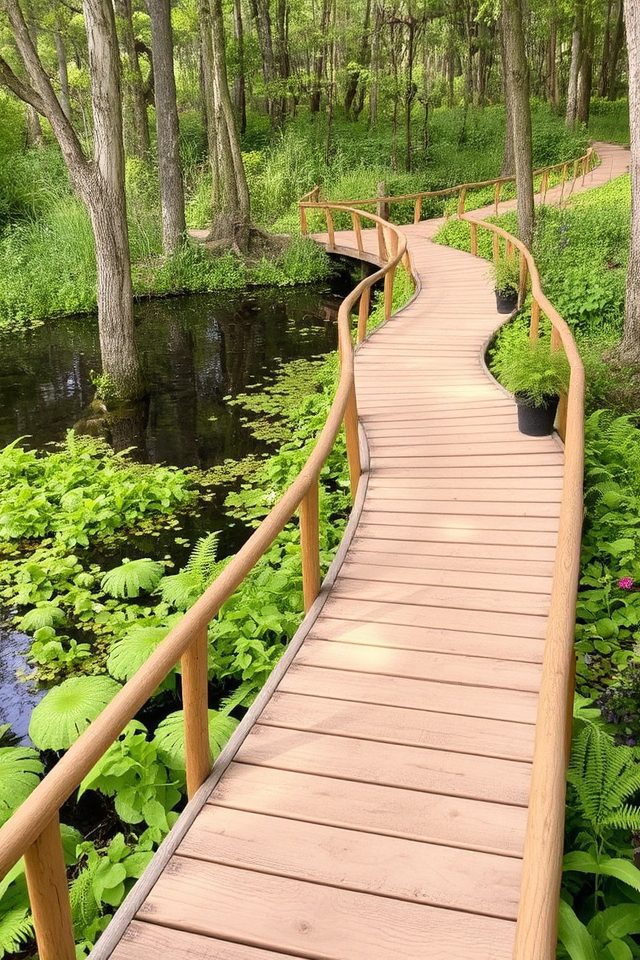
Creating a boardwalk or path in wet areas can enhance accessibility while protecting delicate vegetation. Using materials like treated wood or composite decking, guarantee the walkway is elevated to prevent water pooling. Incorporate drainage features to manage excess moisture effectively. A well-placed boardwalk can guide visitors through lush, wetland landscapes, creating visual interest and a natural aesthetic. Additionally, consider adding decorative elements like railing or plantings along the edges to blend seamlessly with the surrounding environment.
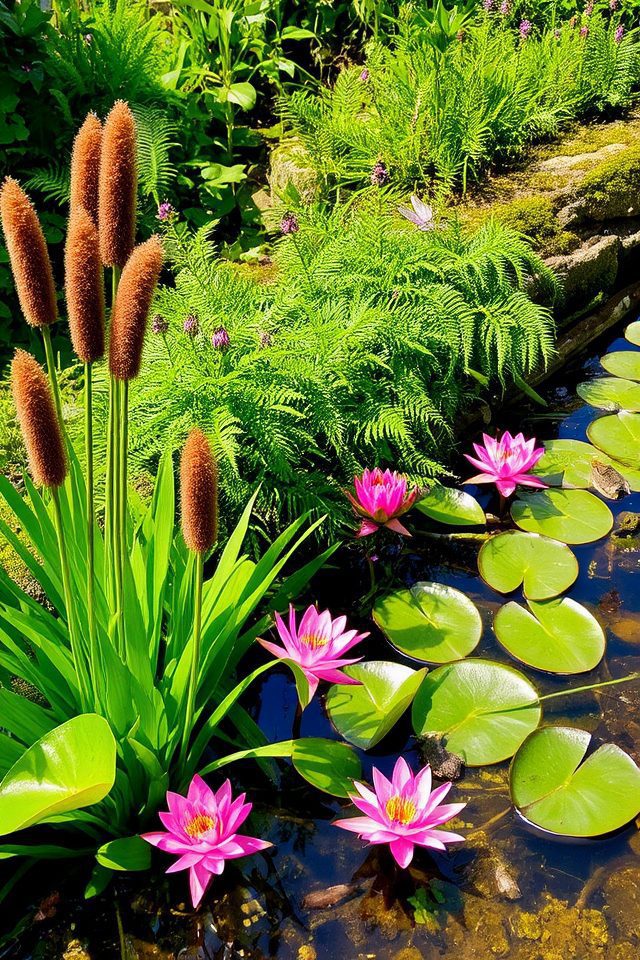
Incorporating aquatic plants into wet areas can enhance the beauty and biodiversity of your garden. These plants, such as water lilies, cattails, and bog sage, not only thrive in moist conditions but also support local wildlife by providing habitat and food sources. When designing your garden, consider creating layers with tall plants at the back and smaller varieties at the front, ensuring easy access and visibility. Additionally, aquatic plants help with water filtration, keeping your wet areas healthy and vibrant.
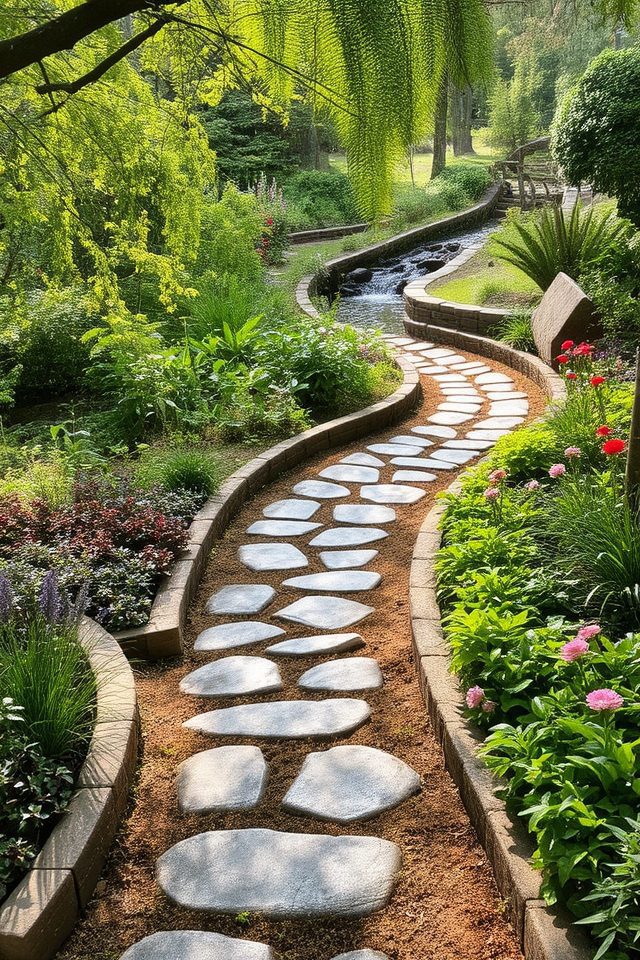
Designing with curved borders in wet areas adds a dynamic and soft aesthetic to your garden. Curved lines mimic the natural flow of water, creating a seamless connection between your landscape and the surrounding environment. Use materials like natural stone or timber to outline planting beds, allowing for easy drainage while enhancing visual appeal. Incorporating curves also encourages diverse planting opportunities, allowing water-tolerant plants to flourish in a harmonious, inviting space.

When gardening in wet areas, incorporating edible plants can be both practical and rewarding. Choose moisture-loving varieties such as watercress, rhubarb, and certain types of berries like blueberries and cranberries, which thrive in soggy soil. Additionally, herbs like mint and chives flourish in damp conditions. Not only do these plants enhance the landscape, but they also provide fresh produce right from your garden, making it a functional and delicious addition to your outdoor space.
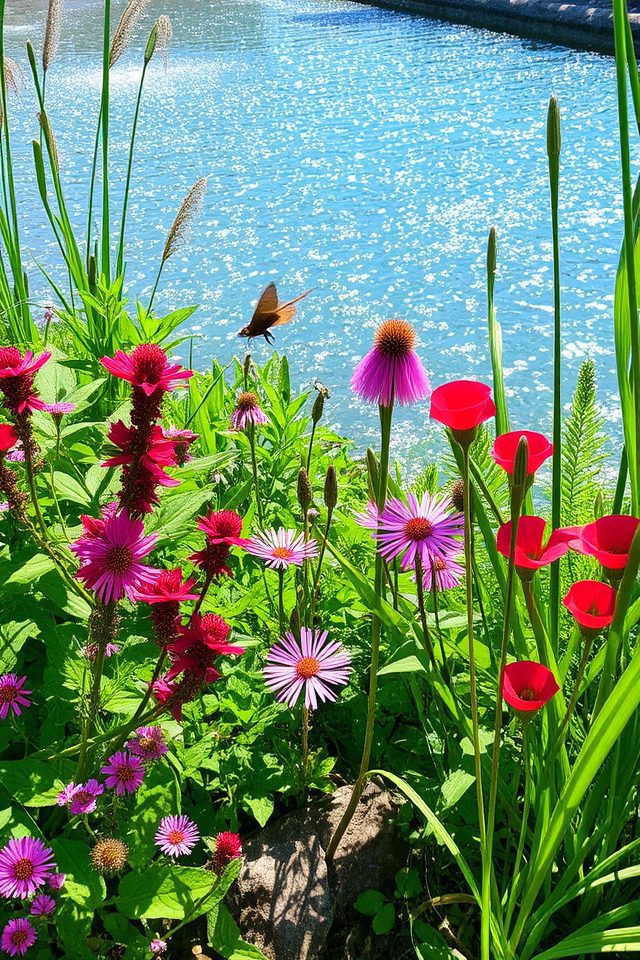
Enhancing biodiversity in wet garden areas can be achieved by incorporating pollinator plants that thrive in moist conditions. Native species such as bee balm, swamp milkweed, and cardinal flower not only attract bees, butterflies, and hummingbirds but also support the local ecosystem. By creating a vibrant environment rich in color and scent, these plants can help sustain pollinator populations, promote healthy garden practices, and improve overall ecological balance in wetland habitats.
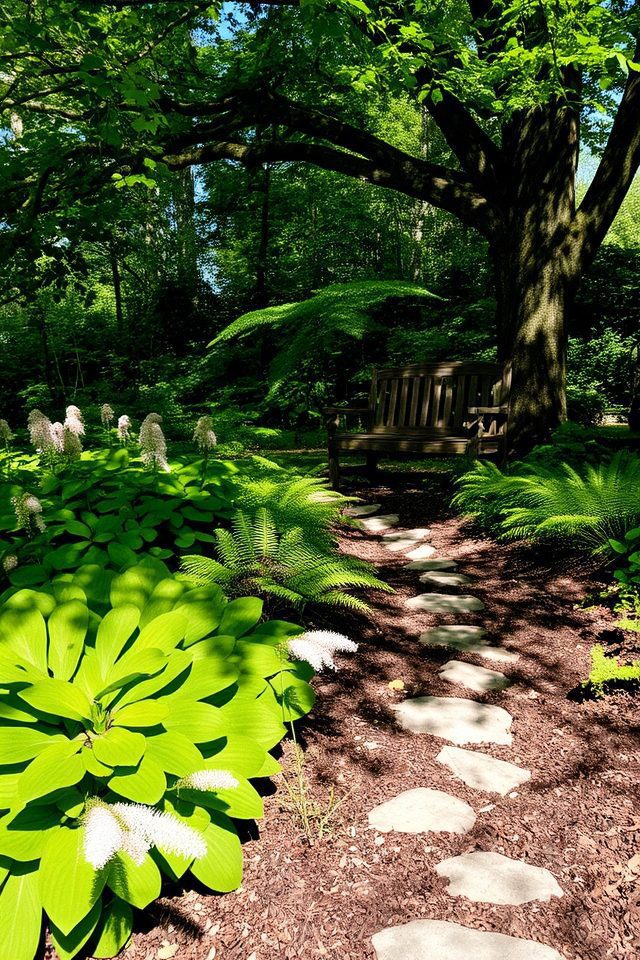
Creating a shade garden in wet areas can transform a challenging space into a lush sanctuary. Start by selecting moisture-loving plants such as ferns, hostas, and astilbes that thrive in low-light conditions. Incorporate layering by placing taller plants at the back and shorter ones in the front to create depth. Use mulch to help retain soil moisture and prevent weed growth. Adding elements like stones or ornamental benches can enhance the tranquil vibe of your shade garden.
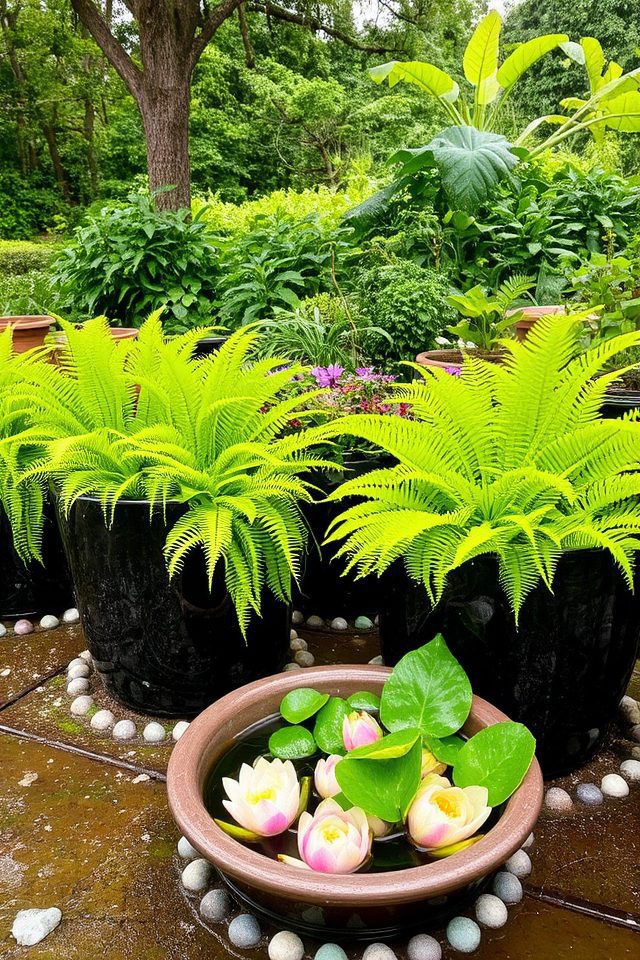
Container gardens are an excellent solution for damp areas in your yard where traditional planting might struggle. By choosing moisture-loving plants, such as ferns, hostas, or even some aquatic varieties, you can create vibrant displays that thrive despite wet conditions. Additionally, using elevated pots or self-draining containers can help prevent root rot and guarantee healthy growth. This approach not only adds beauty to soggy spots but also allows for easy relocation as needed.
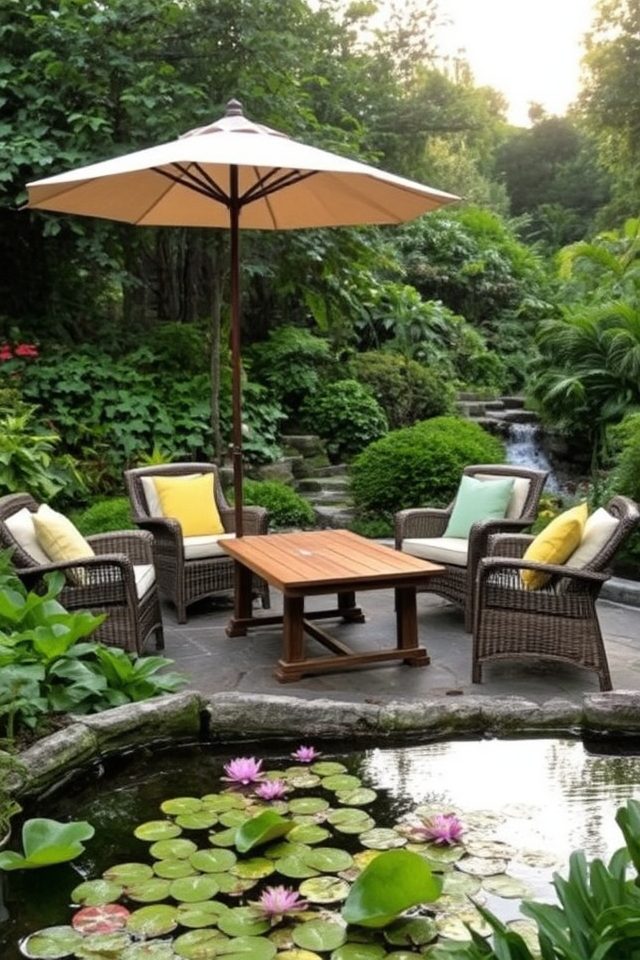
Incorporating outdoor seating into wet areas of your garden can transform these spaces into inviting retreats. Opt for weather-resistant furniture made of materials like teak, aluminum, or synthetic rattan to endure the moisture. Position seating near water features, such as ponds or streams, to create a serene ambiance. Add cozy cushions and throws for comfort and style, and consider a shaded area with a pergola or umbrella to enjoy the space rain or shine.
Transforming your wet areas into vibrant gardens isn’t just achievable; it’s an adventure that’ll blow your mind! By selecting the right plants, incorporating ornamental grasses, and enhancing biodiversity, you’re not only creating a stunning landscape but also a thriving ecosystem. With rain gardens, ponds, and container options, every damp spot can become a enchanting oasis. So roll up your sleeves, immerse yourself in these ideas, and watch as your outdoor space bursts into life year-round!

Don't let aphids, slugs, and caterpillars ruin another plant. Take back control with simple, natural methods that actually work.